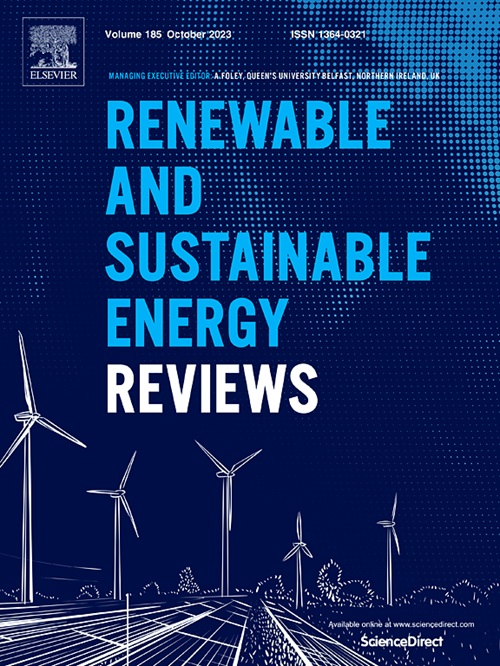太阳能选址生物多样性相关标准的书目综合
IF 16.3
1区 工程技术
Q1 ENERGY & FUELS
引用次数: 0
摘要
太阳能发电的广泛发展有望缓解全球范围内气候变化带来的威胁,同时可能影响局部范围内的生物多样性。开发商必须努力最大化太阳能生产,同时尽量减少与生物多样性保护的冲突,特别是在保护世界30%陆地和海洋面积的呼声日益高涨的情况下。在这里,我们参考文献综合了同行评议的太阳能适用性分析,试图优化最适合太阳能发展的地点,并召集了一个能源专家小组,在太阳能装置选址中使用生物多样性相关标准。我们发现,在太阳能适宜性分析中使用的生物多样性相关标准似乎主要是为了满足法律要求,因此,可能无法充分考虑太阳能基础设施对当地和/或区域生物多样性的潜在影响。专家小组确定了将生物多样性相关标准纳入太阳能适宜性分析的两个主要障碍:缺乏相关尺度的高质量数据,以及管理如何将生物多样性问题纳入太阳能选址的监管要求薄弱。太阳能开发和生物多样性保护解决了气候变化和生物多样性丧失的双重危机,将生物多样性相关标准纳入太阳能适宜性分析可以确保两者的目标保持一致。本文章由计算机程序翻译,如有差异,请以英文原文为准。
Bibliographic synthesis of biodiversity-relevant criteria for solar energy siting
The widespread expansion of solar energy generation promises to help mitigate global-scale threats from climate change while potentially impacting biodiversity at local scales. Developers must attempt to maximize solar energy production while minimizing conflicts with biodiversity conservation, particularly as calls for the conservation of 30 % of the world's land and sea area gain traction. Here, we bibliographically synthesized peer-reviewed solar suitability analyses that attempt to optimize locations most suitable for solar development and convened a panel of energy experts to contextualize the use of biodiversity-relevant criteria in siting solar installations. We found that biodiversity-relevant criteria seemed to be used in solar suitability analyses primarily to meet legal requirements, and, thus, may not adequately account for the potential effects of solar infrastructure on local and/or regional biodiversity. The expert panel identified two primary barriers to incorporating biodiversity-relevant criteria into solar suitability analyses: a lack of quality data at relevant scales, and weak regulatory requirements that govern how biodiversity concerns are incorporated into solar siting. Solar energy development and biodiversity conservation address the twin crises of climate change and biodiversity loss, and the inclusion of biodiversity-relevant criteria into solar suitability analyses can ensure their goals remain aligned.
求助全文
通过发布文献求助,成功后即可免费获取论文全文。
去求助
来源期刊

Renewable and Sustainable Energy Reviews
工程技术-能源与燃料
CiteScore
31.20
自引率
5.70%
发文量
1055
审稿时长
62 days
期刊介绍:
The mission of Renewable and Sustainable Energy Reviews is to disseminate the most compelling and pertinent critical insights in renewable and sustainable energy, fostering collaboration among the research community, private sector, and policy and decision makers. The journal aims to exchange challenges, solutions, innovative concepts, and technologies, contributing to sustainable development, the transition to a low-carbon future, and the attainment of emissions targets outlined by the United Nations Framework Convention on Climate Change.
Renewable and Sustainable Energy Reviews publishes a diverse range of content, including review papers, original research, case studies, and analyses of new technologies, all featuring a substantial review component such as critique, comparison, or analysis. Introducing a distinctive paper type, Expert Insights, the journal presents commissioned mini-reviews authored by field leaders, addressing topics of significant interest. Case studies undergo consideration only if they showcase the work's applicability to other regions or contribute valuable insights to the broader field of renewable and sustainable energy. Notably, a bibliographic or literature review lacking critical analysis is deemed unsuitable for publication.
 求助内容:
求助内容: 应助结果提醒方式:
应助结果提醒方式:


